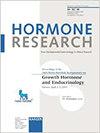Primary aldosteronism.
引用次数: 1
Abstract
Background: Hypertension is one of the world’s leading risk factors for morbidity and mortality. Most affected individuals have primary hypertension, while the most common cause of secondary hypertension is primary aldosteronism (6–10%). Primary Aldosteronism: Clinical manifestations include hypertension, hypokalemic alkalosis, renal dysfunction, nephrogenic diabetes insipidus, muscle weakness, paresthesias, tetany and, in severe cases, paralysis. The cardiovascular risks for patients with primary aldosteronism are greater than those for patients with primary hypertension. Compared with normotensive subjects, patients with primary aldosteronism have a 4.2-fold greater risk of stroke, a 6.5-fold greater risk of myocardial infarction and a 12.1-fold greater risk of atrial fibrillation. Diagnosis: Patients with hypertension are screened for primary aldosteronism based on the plasma aldosterone to plasma renin activity ratio. A value >30 constitutes a positive result. The diagnosis must be confirmed using one of four available aldosterone suppression tests. Lateralization of aldosterone hypersecretion is documented by adrenal venous sampling. Management: The foundation of primary aldosteronism management is normalization of circulating aldosterone and/or mineralocorticoid blockade. Optimal treatment of unilateral disease is adrenalectomy; spironolactone is the treatment of choice for bilateral disease.原发性醛固酮增多症。
背景:高血压是世界上发病率和死亡率的主要危险因素之一。大多数患者患有原发性高血压,而继发性高血压最常见的原因是原发性醛固酮增多症(6-10%)。原发性醛固酮增多症:临床表现包括高血压、低钾性碱中毒、肾功能不全、肾源性尿崩症、肌肉无力、感觉异常、抽搐,严重者可出现瘫痪。原发性醛固酮增多症患者的心血管风险大于原发性高血压患者。与血压正常者相比,原发性醛固酮增多症患者发生卒中的风险增加4.2倍,发生心肌梗死的风险增加6.5倍,发生房颤的风险增加12.1倍。诊断:根据血浆醛固酮与血浆肾素活性比,筛查高血压患者原发性醛固酮增多症。值>30为阳性结果。诊断必须通过四种可用的醛固酮抑制试验中的一种来证实。侧化醛固酮高分泌是由肾上腺静脉取样记录的。管理:原发性醛固酮增多症管理的基础是循环醛固酮正常化和/或矿化皮质激素阻断。单侧病变的最佳治疗方法是肾上腺切除术;螺内酯是双侧疾病的首选治疗方法。
本文章由计算机程序翻译,如有差异,请以英文原文为准。
求助全文
约1分钟内获得全文
求助全文

 求助内容:
求助内容: 应助结果提醒方式:
应助结果提醒方式:


